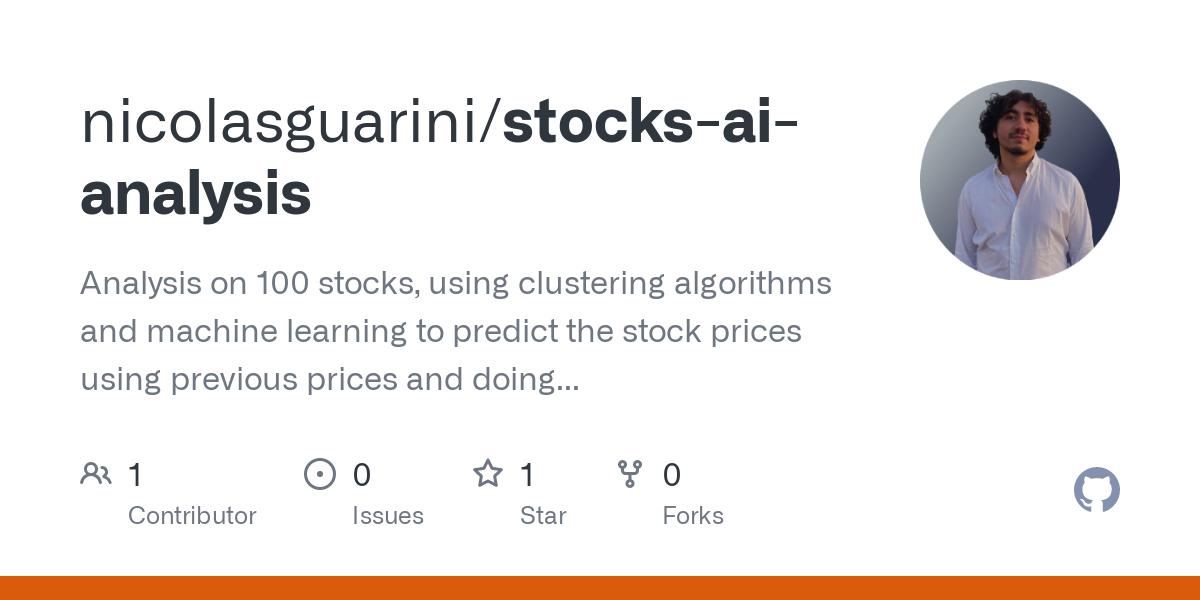In order for AI-driven trading platforms and stock prediction systems to give accurate and reliable information it is vital to evaluate the accuracy of their data sources. A poor quality of data could lead to inaccurate predictions, financial losses, or mistrust toward the platform. Here are 10 best methods to assess the quality of data and the source:
1. Verify data sources
Check the source of the data. Verify that the platform uses trusted and reliable providers of data, like Bloomberg, Reuters or Morningstar.
Transparency - The platform should be transparent about its data sources and should regularly update them.
Avoid dependency on one source: Trustworthy platforms typically aggregate data across several sources to reduce bias and errors.
2. Check Data Freshness
Real-time data vs. delayed data: Determine whether the platform offers actual-time data, or delayed data. Real-time information is essential to ensure that trading is active. Data that is delayed can be sufficient to provide long-term analysis.
Update frequency: Check whether the data is regularly changed (e.g., minute-by-minute, hourly, daily).
Historical data accuracy Be sure the information is correct and consistent.
3. Evaluate Data Completeness
Look for missing information Find out if there are any missing tickers or financial statements as well gaps in the historical data.
Coverage: Make sure that the platform covers a wide selection of stocks, indices, and markets relevant to your trading strategy.
Corporate actions: Check if the platform records dividends, stock splits mergers and other corporate actions.
4. The accuracy of test data
Cross-verify data: Compare data from the platform to other data sources that you trust to ensure the accuracy of the data.
Look for mistakes through examining the outliers or financial metrics that are incorrect.
Backtesting: Use historical data to test trading strategies back and see whether the results are in line with expectations.
5. Assess the Data Granularity
The platform must provide detailed details, such as intraday prices volumes, volumes, bid-ask as well as depth of the order book.
Financial metrics: Make sure that the platform has detailed financial statements, including statements of income, balance sheets and cash flow along with important ratios (such as P/E, ROE, and P/B. ).
6. Make sure that the data processing is checked and Cleaning
Normalization of data: To keep consistency, ensure your platform is able to normalize every data (e.g. by adjusting dividends or splits).
Outlier handling - Verify the way the platform handles anomalies and outliers.
Missing data estimation: Verify that the system relies on reliable methods to fill in the missing data.
7. Examine data consistency
Timezone alignment Data alignment: align according to the same timezone in order to prevent any discrepancies.
Format consistency: Ensure that the data is presented consistently.
Cross-market consistency: Ensure that the data from various exchanges or markets is consistent.
8. Relevance of Data
Relevance to your strategy for trading: Check that the data you are using is compatible with the style you prefer to use in trading (e.g. technical analysis quantitative modeling and fundamental analysis).
Features selection: See whether the platform offers relevant features (e.g. macroeconomic indicators, sentiment analysis, news data) that enhance predictions.
Review Data Security Integrity
Data encryption: Make sure the platform is using encryption to protect data storage and transmission.
Tamper-proofing : Ensure whether the data hasn't been altered by the platform.
Conformity: Ensure that the platform meets regulations on data protection (e.g. CCPA, GDPR).
10. Test the platform's AI model transparency
Explainability: Make sure the platform gives insight into how the AI model makes use of the data to generate predictions.
Bias detection: Verify that the platform monitors, and mitigates, biases within the models or data.
Performance metrics - Evaluate the track record of the platform and performance metrics (e.g. : accuracy, accuracy, and recall) in order to evaluate the reliability of their predictions.
Bonus Tips
User reviews: Read the reviews from other users to gauge about the accuracy and reliability of the data.
Trial period. Try the trial for free to test the features and quality of data of your platform prior to deciding to purchase.
Customer support - Make sure that the platform you choose to use is able to provide robust customer service to resolve any data-related issues.
With these suggestions, you can better assess the accuracy of data and the sources of AI platform for stock predictions, ensuring you make well-informed and trustworthy trading decisions. Follow the best this hyperlink on best ai stock for more recommendations including incite ai, ai copyright trading bot, ai investment stock, copyright ai bot, trading ai bot, ai stock predictions, best stock analysis website, ai trading, using ai to trade stocks, ai stock prediction and more.

Top 10 Tips For Evaluating The Speed And Latency Of Ai Platform For Analyzing And Predicting Trading Stocks
The speed and latency of a system is an important factor to consider when considering AI software for stock prediction or analyzing trading platforms. This is particularly true for algorithmic traders, high-frequency traders, as well as active traders. Even milliseconds delay can have an impact on the profitability of trading. Here are the top 10 strategies for evaluating latency and speed on these platforms:
1. Data feeds that are real-time: How can you evaluate them
Time to deliver data: The platform should provide real-time, accurate information within an extremely short time (e.g. with sub-millisecond delays).
The data source's proximity Check whether the servers of the platform are located close to major exchanges in order to cut down on the time for data transmission.
Data compression - Make sure that the platform employs efficient data compression techniques to increase data delivery speed.
2. Test Trade Execution Time
Order processing: The platform's ability to complete and process trades fast after an order is submitted.
Direct Market Access (DMA) Check to see if the platform supports DMA. This lets orders go directly to the exchange without the need for intermediaries.
Execution reports: See if the platform provides comprehensive execution reports, such as timestamps for order submission, confirmation and fill.
3. Examine the Platform's Responsiveness
Speed of the user interface (UI): Measure the speed at which your user interface of the platform responds to your inputs.
Chart updates - Make sure that your charts are up-to-date immediately and without any lag.
Performance of mobile apps. If you're using a smartphone app that is running, it will perform just as fast as its desktop counterpart.
4. Check for low-latency infrastructure
Locations of the servers The platform should utilize high-speed, low-latency servers which are located close to major financial hubs or exchanges.
Look for colocation options. These services allow you to host your algorithms near to the exchange.
High-speed Networks: Verify the platform's utilization of fiber-optic, high-speed network, or other technology with low latency.
5. Backtesting and Evaluation of Simulation Speed
Test the platform's ability to process and analyze historical data.
Simulation latency: Ensure the platform can simulate trades in real-time with no significant delays.
Parallel processing (or distributed computing) Find out whether a platform makes use of the concept of parallel processing or distributed processing in order to accelerate complex calculations.
6. Estimate API Latency
API response times: Determine how fast APIs respond to requests (e.g., fetching information from the platform, placing orders).
Rate limits: Check whether API has reasonable rate limits in order to avoid delays in high-frequency transactions.
WebSocket Check if the platform is compatible with WebSocket protocols, which allow for streaming of data in real-time with low latency.
7. Test the stability of your platform using Load
Simulate scenarios of high-volume trading to determine if the platform is stable and responsive.
Market volatility Test the platform during times of extreme market volatility to ensure that it can handle sudden price changes.
Test your strategy for stress: Find out whether the platform permits users to test their plan under extreme conditions.
8. Evaluation of Network and Connectivity
Internet speed needs. Make sure that your internet connection has the minimum speeds recommended for your platform to guarantee optimal performance.
Redundant connections: Check if the platform supports redundant internet connections to prevent downtime.
VPN latency. If you are using the VPN be sure to check if it introduces an excessive amount of latency.
9. Look for Speed Optimization Features
Pre-trade analytics: Make sure that the platform offers pre-trade analytics to improve the routing of orders and speed of execution.
Smart order routing (SOR) Check that the platform is using SOR to find the fastest and cost-effective execution venues.
Monitoring latency: Check if the platform provides tools for monitoring and analyzing latency in real-time.
10. Review User Feedback and Benchmarks
User reviews: Read feedback from users to evaluate the platform's speed and performance.
Third-party benchmarks: Seek out independently-run benchmarks or reviews comparing the speed of the platform with competitors.
Case studies: Determine whether a platform offers instances or case studies that highlight the low-latency features.
Bonus Tips
Trial period: Use a free trial or demo to evaluate the platform's performance and latency in real-world situations.
Support for customers: Check to see if the platform provides assistance with issues related to latency or optimization.
Hardware requirements: Determine if your platform needs specific hardware for optimal performance.
These tips will aid in assessing the performance of AI trading platforms which predict or analyze the prices of stocks. You can pick a trading platform that is the most suitable for the requirements of your trading and eliminates delays. A low latency is essential for high-frequency and algorithmic traders. Even minor delays can have a huge impact on profits. Read the most popular chart analysis ai url for site recommendations including best ai trading app, ai trading, copyright ai bot, best stock analysis website, ai stock picker, trade ai, ai day trading, best ai stocks to buy, best ai stock, ai trading tools and more.
